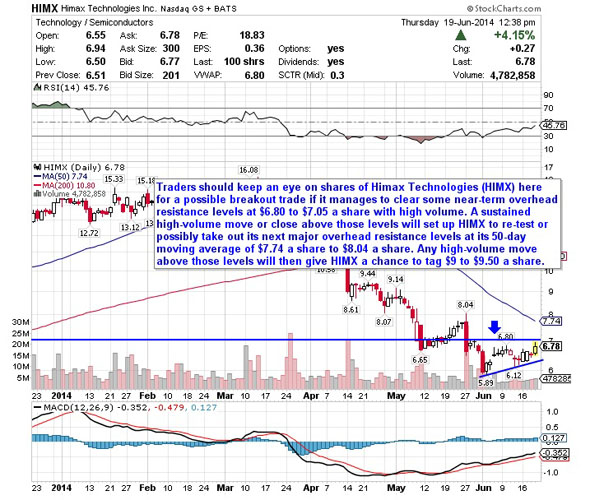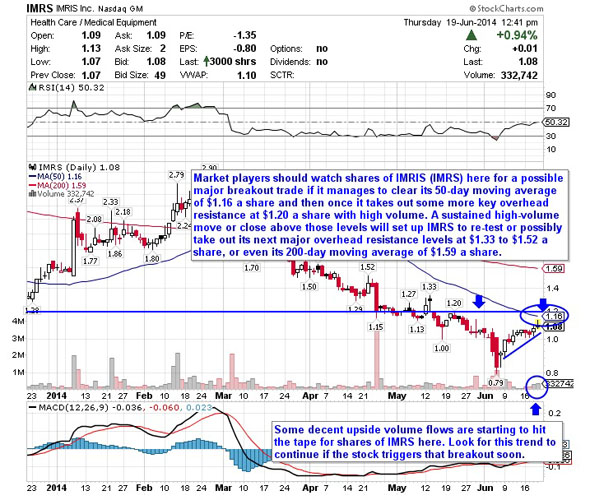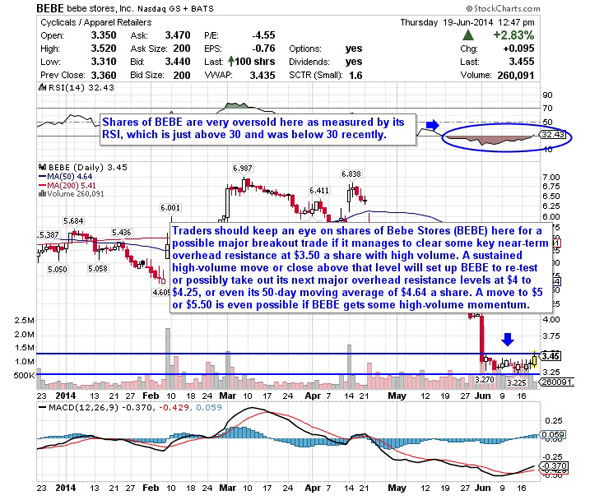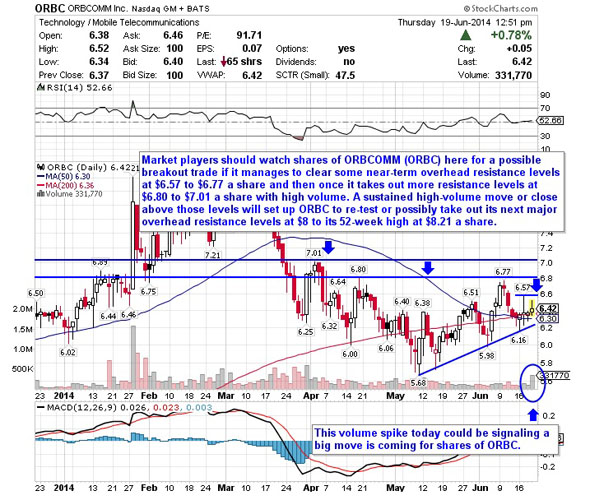Pandora Media (P)'s results for the quarter were quite impressive, with both profits and revenue increasing. But the forecast for earnings per share for this year lies between $0.13 and $0.17, which is below analysts' expectations of $0.19 per share. The main reason behind this weak forecast for earnings is the aggressive investments that Pandora is making to keep up growth in users and to boost advertisement sales in the face of tough competition from Apple (AAPL) and Google.
CEO Brian McAndrews said, "Our bias will continue to be toward revenue growth and capturing additional market share." So Pandora could see some weak earnings figures since it is eyeing a greater share of the market. But is it a good buy at its 52-week high if we look at the various troubles that it is facing.
Increase in Royalties Will Burden Pandora Even More
Pandora pays record companies and publishers in lieu of the songs it plays. Last year, it paid 49% of its revenue to record companies, while 4% of its revenue went to publishers. Due to this large disparity in payments, publishers are struggling to earn money from digital music. Because of the royalty payments, Pandora has to pay for each song it plays, so it is unprofitable as of now. But for every song that Pandora plays, it gets money from ads.
Licensing organization ASCAP is likely to increase the current rate of royalties, according to Business Insider. It is mainly on account of publishers that ASCAP is increasing this rate because, as mentioned already, the publishers are getting less pay as compared to singers and record companies. But this increase will put extra burden on Pandora's balance sheet to the extent that it can lead them to bankruptcy since the company had just $344 million in cash at the end of the last quarter, while it paid $339 million to publishers and record companies in 2013. An increase in royalties can further increase the payout to other parties and handicap Pandora.
Cut-Throat Competition
Also, despite being one of the world's largest online music service companies, having 76 million active users, Pandora faces tough competition from Apple's new iTunes radio service and Google's music subscription service.
When compared to Google and Apple, Pandora lags in technology. Both Google and Apple have their own mobile hardware that enables them to incorporate their service directly into the mobile operating system. Also, if people turn to YouTube, Google has the advantage because of the wealth of data it has on its users.
Google is also pushing its All Access music service to next-generation devices such as the Google Glass. Recently, Google sent VIP invitations to subscribers of its music service to join the Glass Explorer program. Hence, if Google's Glass clicks in the future and becomes a hit with customers, then it might be difficult for Pandora to penetrate this market as well.
Apple is also pushing forth its iTunes radio service in an aggressive manner. It recently launched the service in Australia, making it the first non-U.S. country to get the platform. In the future, Apple aims to launch iTunes Radio in various markets such as the UK, Canada and New Zealand in early 2014. In the long run, Apple is aiming to take the service to more than 100 countries ultimately.
An Overcrowded Industry
To combat these rivals, Pandora is coming up with its own strategies. It is aiming to increase the value of its advertisements by increasing its ad load. In this regard, Pandora is introducing advertising for its in car service this year, and hopes to expand the market for this new service.
However, Google and Apple also have plans to enter this service. With mobile and in-car service already taken into consideration, not much space is left for Pandora's expansion. It will have to venture into new areas like on-demand streaming, which is currently dominated by YouTube. This will increase its advertising avenues without need of increasing the user base. Pandora will have to work hard to know the listening habits of its target audience.
There are other potent competitors as well in the form of Spotify, Rdio, Beats Music and YouTube. This overcrowding of the music industry has caused Pandora to spend heavily on advertising and promotion to attract new customers, and this will ultimately hurt earnings.
The company is increasing its sales force to sell more slots to its advertisers to direct some ad budget to Pandora. Because of this extra selling and marketing costs, margin growth has been offset to some extent.
What Should Investors Do?
Every investor wants to know whether the company could be profitable or not. And Pandora seems to have answered that question with the company expecting to show a profit for the full fiscal year in 2014, even though it had a weak start with losses in the first quarter. Yet, Pandora has to work more to impress investors. The company has covered a lot of ground in the U.S. but it might lose in the wake of competition from Google and Apple. The probable increase in royalties could be another headache, and could even drain its cash reserves and lead to bankruptcy.
So investors should sell Pandora since it is already trading at its 52-week high, and stay away from it till the time the company's strategies start giving results.
| Currently 0.00/512345 Rating: 0.0/5 (0 votes) |
More GuruFocus Links
| Latest Guru Picks | Value Strategies |
| Warren Buffett Portfolio | Ben Graham Net-Net |
| Real Time Picks | Buffett-Munger Screener |
| Aggregated Portfolio | Undervalued Predictable |
| ETFs, Options | Low P/S Companies |
| Insider Trends | 10-Year Financials |
| 52-Week Lows | Interactive Charts |
| Model Portfolios | DCF Calculator |
RSS Feed  | Monthly Newsletters |
| The All-In-One Screener | Portfolio Tracking Tool |
 MORE GURUFOCUS LINKS
MORE GURUFOCUS LINKS | Latest Guru Picks | Value Strategies |
| Warren Buffett Portfolio | Ben Graham Net-Net |
| Real Time Picks | Buffett-Munger Screener |
| Aggregated Portfolio | Undervalued Predictable |
| ETFs, Options | Low P/S Companies |
| Insider Trends | 10-Year Financials |
| 52-Week Lows | Interactive Charts |
| Model Portfolios | DCF Calculator |
RSS Feed  | Monthly Newsletters |
| The All-In-One Screener | Portfolio Tracking Tool |
 28.94 (1y: +59%) $(function(){var seriesOptions=[],yAxisOptions=[],name='P',display='';Highcharts.setOptions({global:{useUTC:true}});var d=new Date();$current_day=d.getDay();if($current_day==5||$current_day==0||$current_day==6){day=4;}else{day=7;} seriesOptions[0]={id:name,animation:false,color:'#4572A7',lineWidth:1,name:name.toUpperCase()+' stock price',threshold:null,data:[[1372309200000,18.16],[1372395600000,18.4],[1372654800000,18.95],[1372741200000,19.54],[1372827600000,19.43],[1373000400000,19.94],[1373259600000,20.52],[1373346000000,19.65],[1373432400000,17.97],[1373518800000,18.22],[1373605200000,18.83],[1373864400000,19.12],[1373950800000,18.73],[1374037200000,18.5],[1374123600000,18.11],[1374210000000,18.3],[1374469200000,18.33],[1374555600000,17.94],[1374642000000,17.89],[1374728400000,18.94],[1374814800000,18.59],[1375074000000,18.35],[1375160400000,18.38],[1375246800000,18.34],[1375333200000,18.76],[1375419600000,19.12],[1375678800000,19.44],[1375765200000,19.03],[1375851600000,18.64],[1375938000000,19.21],[1376024400000,19.7],[1376283600000,20.21],[1376370000000,20.85],[1376456400000,20.57],[1376542800000,19.85],[1376629200000,20.34],[1376888400000,21.17],[1376974800000,21.33],[1377061200000,21.49],[1377147600000,21.71],[1377234000000,18.91],[1377493200000,18.91],[1377579600000,18.16],[1377666000000,18.39],[1377752400000,18.62],[1377838800000,18.42],[1378184400000,18.82],[1378270800000,18.21],[1378357200000,18.98],[1378443600000,19.51],[1378702800000,20.14],[1378789200000,20.35],[1378875600000,21.38],[1378962000000,23.97],[1379048400000,23.99],[1379307600000,23.99],[1379394000000,25.19],[1379480400000,25.64],[1379566800000,27.35],[1379653200000,26.99],[1379912400000,24.26],[1379998800000,24.47],[1380085200000,25.45],[1380171600000,25.39],[1380258000000,25.52],[1380517200000,25.13],[1380603600000,25.53],[1380690000000,26.89],[1380776400000,26.44],[1380862800000,27.51],[1381122000000,26.3],[1381208400000,24.26],[1381294800000,23.78],[1381381200000,24.7],[1381467600000,24.9],[1381726800000,25],[1381813200000,25.18],[1381899600000,26.7],[1381986000000,27.1],[1382072400000,28.17],[1382331600000,27.25],[1382418000000,27.47],[1382504400000,26.59],[1382590800000,26.68],[1382677200000,26.96],[1382936400000,26.55],[1383022800000,26.67],[138310! 9200000,25.59],[1383195600000,25.13],[1383282000000,25.99],[1383544800000,25.67],[1383631200000,27.88],[1383717600000,27.37],[1383804000000,26.28],[1383890400000,26.74],[1384149600000,27.15],[1384236000000,28.24],[1384322400000,29.25],[1384408800000,29.47],[1384495200000,31.56],[1384754400000,29.71],[1384840800000,28.74],[1384927200000,28.44],[1385013600000,29.68],[1385100000000,29.23],[1385359200000,27.96],[1385445600000,28.79],[1385532000000,28.54],[1385704800000,28.4],[1385964000000,28.25],[1386050400000,28.27],[1386136800000,29.41],[1386223200000,29.36],[1386309600000,28.52],[1386568800000,28.22],[1386655200000,29.25],[1386741600000,27.17],[1386828000000,26.82],[1386914400000,27.26],[1387173600000,26.84],[1387260000000,26.72],[1387346400000,27.01],[1387432800000,28.2],[1387519200000,28],[1387778400000,29.58],[1387864800000,28.77],[1388037600000,28.7],[1388124000000,27.66],[1388383200000,26.59],[1388469600000,26.6],[1388642400000,26.76],[1388728800000,27.59],[1388988000000,31.49],[1389074400000,32.44],[1389160800000,32.7],[1389247200000,32.78],[1389333600000,33.47],[1389592800000,32.53],[1389679200000,34.13],[1389765600000,35.05],[1389852000000,35.74],[1389938400000,35.12],[1390284000000,35.01],[1390370400000,34.62],[1390456800000,34.64],[1390543200000,33.55],[1390802400000,33.12],[1390888800000,33.94],[1390975200000,32.92],[1391061600000,36.53],[1391148000000,36.07],[1391407200000,34.98],[1391493600000,35.8],[139158000
28.94 (1y: +59%) $(function(){var seriesOptions=[],yAxisOptions=[],name='P',display='';Highcharts.setOptions({global:{useUTC:true}});var d=new Date();$current_day=d.getDay();if($current_day==5||$current_day==0||$current_day==6){day=4;}else{day=7;} seriesOptions[0]={id:name,animation:false,color:'#4572A7',lineWidth:1,name:name.toUpperCase()+' stock price',threshold:null,data:[[1372309200000,18.16],[1372395600000,18.4],[1372654800000,18.95],[1372741200000,19.54],[1372827600000,19.43],[1373000400000,19.94],[1373259600000,20.52],[1373346000000,19.65],[1373432400000,17.97],[1373518800000,18.22],[1373605200000,18.83],[1373864400000,19.12],[1373950800000,18.73],[1374037200000,18.5],[1374123600000,18.11],[1374210000000,18.3],[1374469200000,18.33],[1374555600000,17.94],[1374642000000,17.89],[1374728400000,18.94],[1374814800000,18.59],[1375074000000,18.35],[1375160400000,18.38],[1375246800000,18.34],[1375333200000,18.76],[1375419600000,19.12],[1375678800000,19.44],[1375765200000,19.03],[1375851600000,18.64],[1375938000000,19.21],[1376024400000,19.7],[1376283600000,20.21],[1376370000000,20.85],[1376456400000,20.57],[1376542800000,19.85],[1376629200000,20.34],[1376888400000,21.17],[1376974800000,21.33],[1377061200000,21.49],[1377147600000,21.71],[1377234000000,18.91],[1377493200000,18.91],[1377579600000,18.16],[1377666000000,18.39],[1377752400000,18.62],[1377838800000,18.42],[1378184400000,18.82],[1378270800000,18.21],[1378357200000,18.98],[1378443600000,19.51],[1378702800000,20.14],[1378789200000,20.35],[1378875600000,21.38],[1378962000000,23.97],[1379048400000,23.99],[1379307600000,23.99],[1379394000000,25.19],[1379480400000,25.64],[1379566800000,27.35],[1379653200000,26.99],[1379912400000,24.26],[1379998800000,24.47],[1380085200000,25.45],[1380171600000,25.39],[1380258000000,25.52],[1380517200000,25.13],[1380603600000,25.53],[1380690000000,26.89],[1380776400000,26.44],[1380862800000,27.51],[1381122000000,26.3],[1381208400000,24.26],[1381294800000,23.78],[1381381200000,24.7],[1381467600000,24.9],[1381726800000,25],[1381813200000,25.18],[1381899600000,26.7],[1381986000000,27.1],[1382072400000,28.17],[1382331600000,27.25],[1382418000000,27.47],[1382504400000,26.59],[1382590800000,26.68],[1382677200000,26.96],[1382936400000,26.55],[1383022800000,26.67],[138310! 9200000,25.59],[1383195600000,25.13],[1383282000000,25.99],[1383544800000,25.67],[1383631200000,27.88],[1383717600000,27.37],[1383804000000,26.28],[1383890400000,26.74],[1384149600000,27.15],[1384236000000,28.24],[1384322400000,29.25],[1384408800000,29.47],[1384495200000,31.56],[1384754400000,29.71],[1384840800000,28.74],[1384927200000,28.44],[1385013600000,29.68],[1385100000000,29.23],[1385359200000,27.96],[1385445600000,28.79],[1385532000000,28.54],[1385704800000,28.4],[1385964000000,28.25],[1386050400000,28.27],[1386136800000,29.41],[1386223200000,29.36],[1386309600000,28.52],[1386568800000,28.22],[1386655200000,29.25],[1386741600000,27.17],[1386828000000,26.82],[1386914400000,27.26],[1387173600000,26.84],[1387260000000,26.72],[1387346400000,27.01],[1387432800000,28.2],[1387519200000,28],[1387778400000,29.58],[1387864800000,28.77],[1388037600000,28.7],[1388124000000,27.66],[1388383200000,26.59],[1388469600000,26.6],[1388642400000,26.76],[1388728800000,27.59],[1388988000000,31.49],[1389074400000,32.44],[1389160800000,32.7],[1389247200000,32.78],[1389333600000,33.47],[1389592800000,32.53],[1389679200000,34.13],[1389765600000,35.05],[1389852000000,35.74],[1389938400000,35.12],[1390284000000,35.01],[1390370400000,34.62],[1390456800000,34.64],[1390543200000,33.55],[1390802400000,33.12],[1390888800000,33.94],[1390975200000,32.92],[1391061600000,36.53],[1391148000000,36.07],[1391407200000,34.98],[1391493600000,35.8],[139158000
 NEW YORK (CNNMoney) Americans' incomes are rising, but they aren't spending their extra cash.
NEW YORK (CNNMoney) Americans' incomes are rising, but they aren't spending their extra cash.  Pritzker: minimum wage is insufficient
Pritzker: minimum wage is insufficient  Simon Dawson/Bloomberg via Getty Images Barclays CEO Antony Jenkins NEW YORK-- The New York state attorney general has filed a securities fraud lawsuit against Barclays , accusing the British bank of giving an unfair edge in the United States to high-frequency trading clients even as it claimed to be protecting other customers from such traders. The lawsuit, which relates to Barclays' LX Liquidity Cross "dark pool" alternative trading system, alleges that the bank promised to get the best possible prices for customers looking to buy or sell shares but instead took steps that maximized the bank's profits and executed nearly all of its customers' stock orders on LX instead of on exchanges or other venues that might have offered better prices. The New York Attorney General's action is the highest profile case yet to emerge in the U.S. authorities' efforts to ensure that dealers aren't ripping off investors in increasingly automated stock markets. These probes have been progressing for up to a year, but took on additional urgency in recent months, after best-selling author Michael Lewis released the book "Flash Boys: A Wall Street Revolt," which contends that markets were rigged. Dark pools were originally created to allow investors to execute big trades without tipping off the market. But ever-larger volumes of trades have been shunted into dark pools and their critics say the opacity of the markets may be resulting in more and more investors getting ripped off. Barclays' London-listed shares were down 4.5 percent at 219.65 pence by 0753 GMT (3:53 a.m. Eastern time) on Thursday, their lowest level since November 2012 and extending their fall this year to 20 percent. The lawsuit delivers another blow to Chief Executive Officer Antony Jenkins' efforts to restore the bank's reputation after a series of scandals. He has said its culture, which has been criticized as high-risk, high-reward, had to change and that systems and controls are improving, but the emergence of past sins are hampering his efforts. New York Attorney General Eric Schneiderman said Barclays told customers who chose to trade in its dark pool that they would be protected from "predatory traders," which use their speed advantage to deprive other investors of small profits on every trade. But in fact customers weren't protected at all, and the bank in fact courted predatory high-frequency traders in part by charging them virtually nothing, Schneiderman alleged. "Barclays grew its dark pool by telling investors they were diving into safe waters," Schneiderman said. "Barclays' dark pool was full of predators -- there at Barclays' invitation." "We take these allegations very seriously," Barclays said in an emailed statement. It added that it was cooperating with the authorities, looking at the matter internally, and that the integrity of markets was a top priority for the bank. Schneiderman is looking at dark pools, which are typically owned by brokers, including all of the big banks, and where participants are anonymous and trading information is hidden until after the trades are completed. The U.S. Securities and Exchange Commission has also taken an increased interest in issues surrounding dark pools and high-frequency trading. SEC Chair Mary Jo White earlier this month said her agency was developing a series of rules that would seek to make markets more transparent and fair for all investors, and the agency has also stepped up enforcement actions against dark pool operators. Banks have admitted to bad behavior in other markets, after probes showed collusion in currency trading and short-term interest rate products, among other areas. No Air Bag, No Brakes Jenkins took over as Barclays chief executive in August 2012, replacing Bob Diamond who was ousted after the bank was fined for the alleged manipulation of Libor benchmark interest rates. Jenkins is trying to improve profitability by cutting costs, including the axing of around a quarter of investment bank jobs, while pushing for the change in culture. But the bank continues to be dogged by issues around past conduct, however, and last month it was fined 26 million pounds ($43.8 million) for past failures in internal controls that allowed a trader to manipulate the setting of gold prices. The New York Attorney General's complaint against Barclays, which is based on internal communications provided by former employees, says while the firm told its clients it would keep high-frequency traders that engage in "predatory" trading practices out of its dark pool it never actually prevented any trader from participating. For example the complaint alleged that Barclays falsified marketing material it said showed the extent and type of high-frequency traders in its dark pool by not including high-frequency trading firm Tradebot Systems. Barclays had already identified Tradebot, which at the time was the largest participant in the dark pool, as having been engaged in aggressive trading behavior. A spokeswoman for Tradebot, of Kansas City, Missouri, said the firm had no comment. Barclays wooed high-frequency traders by disclosing detailed, sensitive information about other customers to the firms to help ensure their aggressive trading strategies were effective, and by charging them almost nothing, the complaint said. HFT accounts for around half of all U.S. trading volume. The complaint didn't specify the amount of damages being sought from Barclays. Barclays also told its clients it doesn't favor its own dark pool when routing client orders to trading venues, when in reality it was doing just that, the complaint said. One former Barclays employee told the Attorney General's office that based on the high amount of client orders Barclays was sending to its own dark pool, better trading opportunities may have been missed elsewhere. There was a lot going on in the dark pool that was not in the best interests of Barclays clients, one former director said, according to the complaint. "The practice of almost ensuring that every counterparty would be a high-frequency firm, it seems to me that that wouldn't be in the best interest of their clients ... It's almost like they are building a car and saying it has an air bag and there is no air bag or brakes." The SEC is considering forcing dark pools and firms that match customers' orders internally to tell regulators and the public how they operate. In early June, the SEC filed a civil lawsuit against dark pool operator Liquidnet for allegedly improperly using its subscribers' confidential trading information to market its services. The SEC declined to comment on the lawsuit. -.
Simon Dawson/Bloomberg via Getty Images Barclays CEO Antony Jenkins NEW YORK-- The New York state attorney general has filed a securities fraud lawsuit against Barclays , accusing the British bank of giving an unfair edge in the United States to high-frequency trading clients even as it claimed to be protecting other customers from such traders. The lawsuit, which relates to Barclays' LX Liquidity Cross "dark pool" alternative trading system, alleges that the bank promised to get the best possible prices for customers looking to buy or sell shares but instead took steps that maximized the bank's profits and executed nearly all of its customers' stock orders on LX instead of on exchanges or other venues that might have offered better prices. The New York Attorney General's action is the highest profile case yet to emerge in the U.S. authorities' efforts to ensure that dealers aren't ripping off investors in increasingly automated stock markets. These probes have been progressing for up to a year, but took on additional urgency in recent months, after best-selling author Michael Lewis released the book "Flash Boys: A Wall Street Revolt," which contends that markets were rigged. Dark pools were originally created to allow investors to execute big trades without tipping off the market. But ever-larger volumes of trades have been shunted into dark pools and their critics say the opacity of the markets may be resulting in more and more investors getting ripped off. Barclays' London-listed shares were down 4.5 percent at 219.65 pence by 0753 GMT (3:53 a.m. Eastern time) on Thursday, their lowest level since November 2012 and extending their fall this year to 20 percent. The lawsuit delivers another blow to Chief Executive Officer Antony Jenkins' efforts to restore the bank's reputation after a series of scandals. He has said its culture, which has been criticized as high-risk, high-reward, had to change and that systems and controls are improving, but the emergence of past sins are hampering his efforts. New York Attorney General Eric Schneiderman said Barclays told customers who chose to trade in its dark pool that they would be protected from "predatory traders," which use their speed advantage to deprive other investors of small profits on every trade. But in fact customers weren't protected at all, and the bank in fact courted predatory high-frequency traders in part by charging them virtually nothing, Schneiderman alleged. "Barclays grew its dark pool by telling investors they were diving into safe waters," Schneiderman said. "Barclays' dark pool was full of predators -- there at Barclays' invitation." "We take these allegations very seriously," Barclays said in an emailed statement. It added that it was cooperating with the authorities, looking at the matter internally, and that the integrity of markets was a top priority for the bank. Schneiderman is looking at dark pools, which are typically owned by brokers, including all of the big banks, and where participants are anonymous and trading information is hidden until after the trades are completed. The U.S. Securities and Exchange Commission has also taken an increased interest in issues surrounding dark pools and high-frequency trading. SEC Chair Mary Jo White earlier this month said her agency was developing a series of rules that would seek to make markets more transparent and fair for all investors, and the agency has also stepped up enforcement actions against dark pool operators. Banks have admitted to bad behavior in other markets, after probes showed collusion in currency trading and short-term interest rate products, among other areas. No Air Bag, No Brakes Jenkins took over as Barclays chief executive in August 2012, replacing Bob Diamond who was ousted after the bank was fined for the alleged manipulation of Libor benchmark interest rates. Jenkins is trying to improve profitability by cutting costs, including the axing of around a quarter of investment bank jobs, while pushing for the change in culture. But the bank continues to be dogged by issues around past conduct, however, and last month it was fined 26 million pounds ($43.8 million) for past failures in internal controls that allowed a trader to manipulate the setting of gold prices. The New York Attorney General's complaint against Barclays, which is based on internal communications provided by former employees, says while the firm told its clients it would keep high-frequency traders that engage in "predatory" trading practices out of its dark pool it never actually prevented any trader from participating. For example the complaint alleged that Barclays falsified marketing material it said showed the extent and type of high-frequency traders in its dark pool by not including high-frequency trading firm Tradebot Systems. Barclays had already identified Tradebot, which at the time was the largest participant in the dark pool, as having been engaged in aggressive trading behavior. A spokeswoman for Tradebot, of Kansas City, Missouri, said the firm had no comment. Barclays wooed high-frequency traders by disclosing detailed, sensitive information about other customers to the firms to help ensure their aggressive trading strategies were effective, and by charging them almost nothing, the complaint said. HFT accounts for around half of all U.S. trading volume. The complaint didn't specify the amount of damages being sought from Barclays. Barclays also told its clients it doesn't favor its own dark pool when routing client orders to trading venues, when in reality it was doing just that, the complaint said. One former Barclays employee told the Attorney General's office that based on the high amount of client orders Barclays was sending to its own dark pool, better trading opportunities may have been missed elsewhere. There was a lot going on in the dark pool that was not in the best interests of Barclays clients, one former director said, according to the complaint. "The practice of almost ensuring that every counterparty would be a high-frequency firm, it seems to me that that wouldn't be in the best interest of their clients ... It's almost like they are building a car and saying it has an air bag and there is no air bag or brakes." The SEC is considering forcing dark pools and firms that match customers' orders internally to tell regulators and the public how they operate. In early June, the SEC filed a civil lawsuit against dark pool operator Liquidnet for allegedly improperly using its subscribers' confidential trading information to market its services. The SEC declined to comment on the lawsuit. -. 




 Popular Posts: Don't Tread on Me – 3 Great All-American Dividend Stocks to Buy3 Things That Could Get Amazon Stock Popping AgainThe Top 10 S&P 500 Dividend Stocks for March Recent Posts: Don’t Buy the Sucker’s Rally in 3D Printing Companies Spiking Oil Prices, Rising Energy Stocks Are Headed for a Fall Oracle Stock a Buy on the Dip After Earnings View All Posts Don’t Buy the Sucker’s Rally in 3D Printing Companies
Popular Posts: Don't Tread on Me – 3 Great All-American Dividend Stocks to Buy3 Things That Could Get Amazon Stock Popping AgainThe Top 10 S&P 500 Dividend Stocks for March Recent Posts: Don’t Buy the Sucker’s Rally in 3D Printing Companies Spiking Oil Prices, Rising Energy Stocks Are Headed for a Fall Oracle Stock a Buy on the Dip After Earnings View All Posts Don’t Buy the Sucker’s Rally in 3D Printing Companies  3D printing companies represent an exciting new technology — in its very early stages. That has names like DDD stock, XONE stock and SSYS stock running on momentum, where ever-accelerating revenue growth — and hope and hype — supports the share price more than the bottom line.
3D printing companies represent an exciting new technology — in its very early stages. That has names like DDD stock, XONE stock and SSYS stock running on momentum, where ever-accelerating revenue growth — and hope and hype — supports the share price more than the bottom line. Related XLE ETF Outlook For Tuesday, June 17, 2014 (ARGT, THD, XLE, TAN, SUNE, SPWR) Energy ETFs Surge Into High-Demand Summer Months
Related XLE ETF Outlook For Tuesday, June 17, 2014 (ARGT, THD, XLE, TAN, SUNE, SPWR) Energy ETFs Surge Into High-Demand Summer Months  "It is obviously clear that everyone would benefit if there was a far more simple way for everyone to charge their cars," one executive who declined to be named told The Financial Times.
"It is obviously clear that everyone would benefit if there was a far more simple way for everyone to charge their cars," one executive who declined to be named told The Financial Times. 




 Getty Images/Scott Olson The demise of Crocs (CROX), it seems, may have been greatly exaggerated. Remember the company's signature product? Close to a decade ago, those colorful, clunky resin clogs were all the rage. The company that made them couldn't sell the things fast enough, at one point reaching sales of 50 million pairs in 2007. Then fashion moved on, as it always does, and the economic slowdown started to bite into sales. Crocs plunged from a $168 million net profit in 2007 to a $185 million loss in 2008. In 2009, the company nearly ran out of cash and had a hard time making payroll. But Crocs' fortunes have improved. In its most recent quarter, the firm posted a loss, but it was narrower than the market was expecting. And it's found an investor that believes in its future -- private equity giant Blackstone Group (BX), which recently provided a $200 million cash investment in return for a block of preferred shares eventually convertible into a stake of around 13 percent of the company. Perhaps the time has come to take those old clogs out of the closet, dust them off, and slip them on for a stroll. Stepping It Up Fashion is highly susceptible to consumer whim. The hot item is never hot for very long, and once consumers move on, it can be hard for the company to recover. In Crocs' case, this was exacerbated by its limited product line -- almost exclusively the clogs. The company learned from its mistakes. Since consumer tastes moved out of clog-land, Crocs has significantly broadened its product line to 300 styles. It now offers boots, flip-flops, deck shoes and slip-ons akin to the casuals from VF Corp.'s (VFC) Vans subsidiary. In terms of profitability, Crocs recovered quickly from its time in the fashion wilderness. From that 2008 bottom-line deficit of $185 million, the company sliced its loss to $42 million the following year, then stepped back into the black in 2010 (to the tune of $68 million). After two straight years of declines, revenue started to pick up in 2010, rising a nice 22 percent on an annual basis and advancing in every subsequent financial year. In fact, 2013's top line came in at nearly $1.2 billion -- around $350 million higher than the firm's big glory year of 2007. In the Black(stone) This kind of performance helped attract the Blackstone Group, which likes to buy its assets cheap and (eventually) exit when the going gets better. Blackstone's $200 million cash investment late last year equated to a cash infusion of around $2.26 per share, and the stock promptly rose by slightly more than that amount after the deal was announced. It seems that shareholders welcome the presence of Blackstone and were encouraged by the vote of confidence it implies. But has that boost in value made Crocs too pricey for the market? At the moment, the stock trades at nearly 28 times expected fiscal 2014 earnings. That's notably more expensive than the 16 times expected earnings of Deckers Outdoor (DECK), which, like Crocs, manufactures a product (Ugg boots) that saw a wild surge of popularity before falling out of fashion. Another pure-play footwear company, Skechers (SKX), can be bought for 19 times current fiscal year earnings. On that basis, Crocs stock is even more expensive than Nike (NKE), arguably one of the best apparel stock plays on the market. Shares of Nike, a master at keeping pace with trends in its fitness niche, trade for just under 26 times anticipated current fiscal year earnings. Fashion Forward? With the fresh involvement of Blackstone -- which now holds two seats on Crocs' eight-member board following its investment -- it's hard to gauge Crocs' strategic direction. Another question mark is the firm's leadership -- CEO John McCarvel is due to retire "on or about" April 30. At the moment, given how expensive the stock is and the uncertainties going forward, Crocs stock is probably not a screaming buy. However, the company has shown a propensity to recover from expired trends and grow while it's at it. Crocs isn't doing at all badly these days. And even though its clogs aren't the flavor of the month anymore, we can't say the firm has completely fallen out of fashion.
Getty Images/Scott Olson The demise of Crocs (CROX), it seems, may have been greatly exaggerated. Remember the company's signature product? Close to a decade ago, those colorful, clunky resin clogs were all the rage. The company that made them couldn't sell the things fast enough, at one point reaching sales of 50 million pairs in 2007. Then fashion moved on, as it always does, and the economic slowdown started to bite into sales. Crocs plunged from a $168 million net profit in 2007 to a $185 million loss in 2008. In 2009, the company nearly ran out of cash and had a hard time making payroll. But Crocs' fortunes have improved. In its most recent quarter, the firm posted a loss, but it was narrower than the market was expecting. And it's found an investor that believes in its future -- private equity giant Blackstone Group (BX), which recently provided a $200 million cash investment in return for a block of preferred shares eventually convertible into a stake of around 13 percent of the company. Perhaps the time has come to take those old clogs out of the closet, dust them off, and slip them on for a stroll. Stepping It Up Fashion is highly susceptible to consumer whim. The hot item is never hot for very long, and once consumers move on, it can be hard for the company to recover. In Crocs' case, this was exacerbated by its limited product line -- almost exclusively the clogs. The company learned from its mistakes. Since consumer tastes moved out of clog-land, Crocs has significantly broadened its product line to 300 styles. It now offers boots, flip-flops, deck shoes and slip-ons akin to the casuals from VF Corp.'s (VFC) Vans subsidiary. In terms of profitability, Crocs recovered quickly from its time in the fashion wilderness. From that 2008 bottom-line deficit of $185 million, the company sliced its loss to $42 million the following year, then stepped back into the black in 2010 (to the tune of $68 million). After two straight years of declines, revenue started to pick up in 2010, rising a nice 22 percent on an annual basis and advancing in every subsequent financial year. In fact, 2013's top line came in at nearly $1.2 billion -- around $350 million higher than the firm's big glory year of 2007. In the Black(stone) This kind of performance helped attract the Blackstone Group, which likes to buy its assets cheap and (eventually) exit when the going gets better. Blackstone's $200 million cash investment late last year equated to a cash infusion of around $2.26 per share, and the stock promptly rose by slightly more than that amount after the deal was announced. It seems that shareholders welcome the presence of Blackstone and were encouraged by the vote of confidence it implies. But has that boost in value made Crocs too pricey for the market? At the moment, the stock trades at nearly 28 times expected fiscal 2014 earnings. That's notably more expensive than the 16 times expected earnings of Deckers Outdoor (DECK), which, like Crocs, manufactures a product (Ugg boots) that saw a wild surge of popularity before falling out of fashion. Another pure-play footwear company, Skechers (SKX), can be bought for 19 times current fiscal year earnings. On that basis, Crocs stock is even more expensive than Nike (NKE), arguably one of the best apparel stock plays on the market. Shares of Nike, a master at keeping pace with trends in its fitness niche, trade for just under 26 times anticipated current fiscal year earnings. Fashion Forward? With the fresh involvement of Blackstone -- which now holds two seats on Crocs' eight-member board following its investment -- it's hard to gauge Crocs' strategic direction. Another question mark is the firm's leadership -- CEO John McCarvel is due to retire "on or about" April 30. At the moment, given how expensive the stock is and the uncertainties going forward, Crocs stock is probably not a screaming buy. However, the company has shown a propensity to recover from expired trends and grow while it's at it. Crocs isn't doing at all badly these days. And even though its clogs aren't the flavor of the month anymore, we can't say the firm has completely fallen out of fashion. ZUMAPRESS.com
ZUMAPRESS.com 

 ) reported its fourth quarter earnings before the opening bell this morning, posting results that beat analysts’ estimates.
) reported its fourth quarter earnings before the opening bell this morning, posting results that beat analysts’ estimates.